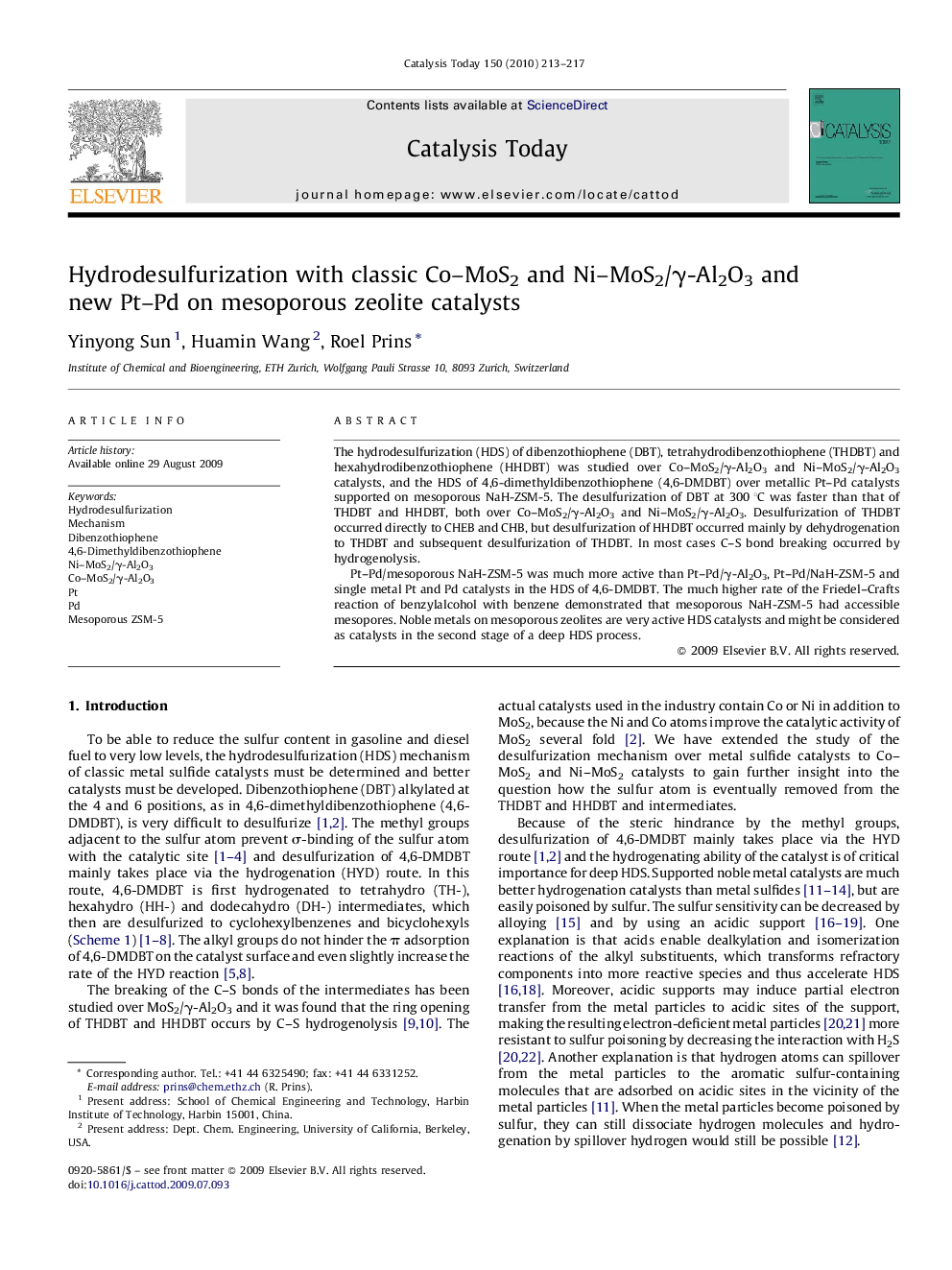| کد مقاله | کد نشریه | سال انتشار | مقاله انگلیسی | نسخه تمام متن |
|---|---|---|---|---|
| 56748 | 47094 | 2010 | 5 صفحه PDF | دانلود رایگان |

The hydrodesulfurization (HDS) of dibenzothiophene (DBT), tetrahydrodibenzothiophene (THDBT) and hexahydrodibenzothiophene (HHDBT) was studied over Co–MoS2/γ-Al2O3 and Ni–MoS2/γ-Al2O3 catalysts, and the HDS of 4,6-dimethyldibenzothiophene (4,6-DMDBT) over metallic Pt–Pd catalysts supported on mesoporous NaH-ZSM-5. The desulfurization of DBT at 300 °C was faster than that of THDBT and HHDBT, both over Co–MoS2/γ-Al2O3 and Ni–MoS2/γ-Al2O3. Desulfurization of THDBT occurred directly to CHEB and CHB, but desulfurization of HHDBT occurred mainly by dehydrogenation to THDBT and subsequent desulfurization of THDBT. In most cases C–S bond breaking occurred by hydrogenolysis.Pt–Pd/mesoporous NaH-ZSM-5 was much more active than Pt–Pd/γ-Al2O3, Pt–Pd/NaH-ZSM-5 and single metal Pt and Pd catalysts in the HDS of 4,6-DMDBT. The much higher rate of the Friedel–Crafts reaction of benzylalcohol with benzene demonstrated that mesoporous NaH-ZSM-5 had accessible mesopores. Noble metals on mesoporous zeolites are very active HDS catalysts and might be considered as catalysts in the second stage of a deep HDS process.
Journal: Catalysis Today - Volume 150, Issues 3–4, 30 March 2010, Pages 213–217